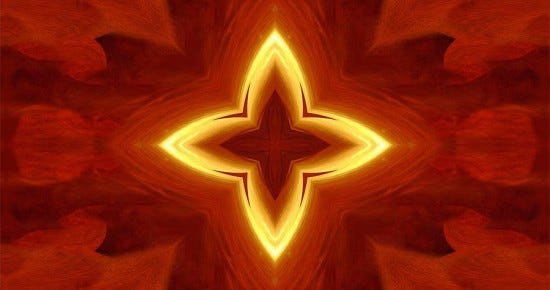Anthem Of Equivalence
Originally published on May 18th, 2014
Tyger Tyger, burning bright,
In the forests of the night;
What immortal hand or eye,
Could frame thy fearful symmetry? – Excerpt from The Tyger, by William Blake
Cast In The Same Mold
Isomorphism derives its name from the Greek iso, meaning “equal,” and morphos, meaning “form,” or “shape.”
It’s used to describe underlying symmetry between high-level concepts in many different fields:
•Mathematics – symmetrical sets of numbers, and transformative relationships between matrices, imagery, and structure. (You’ll find much of the latter in the artwork of M.C. Escher)
•Biology – similarity in body structures or evolutionary paths between species.
•Linguistics – common evolution of word origins, usage, and grammar. (See: Zipf’s Law)
•Game Theory – decision trees which produce mutual stability points, such as Mutually Assured Destruction, a form of Nash Equilibrium – the best-known work of John Forbes Nash
•Chemistry – molecules that share structures and bonds.
•Sociology – repetition of group behavioral and social structures, such as the feudal system evolving separately in both Asia and Europe.
•Psychology – relations between stimuli, actions and memory; Between subparts of the mind and the whole. (See: Hofstadter’s Pullitzer-Prize-Winning Gödel, Escher and Bach)
•Software – programs that use common sections of code or mechanics (i.e. different versions of Linux). Raph Koster explains game engines this way. (See: Every Genre Is Only One Game)
Isomorphic structures can share intertwined relationships.
A precise example of this is the way written language and spoken language each find their way into the other. This is not, however, limited to concepts in the same field…
One of my mentors could dive into new subjects and quickly absorb vast amounts of knowledge. In an astoundingly short period of time, he would sound like an expert who had been studying the topic for years…
Some people have an uncanny ability to find mastery not just within subjects, but across them… (Recommended Reading: Mastery by Robert Greene)
If there aren’t unseen symmetries between disciplines, how else could this be explained?
Symbols Of The Mind
“The universe is built on a plan the profound symmetry of which is somehow present in the inner structure of our intellect.” – Paul Valery
When something must be made use of without taking the original, it makes sense to use the best available representation.
Thus, our memories are stored in symbols for the same reason props are used on a theatrical stage – as a necessary stand-in for the original.
When you read the word apple, your mind sees more than just a word; It conjures up memories of color, taste, smell, and sound – perhaps even associated places, times, and people. Such experiences become attached to the symbols we store them close to…
A few years ago, when visiting relatives, I walked into a house I had not seen in many years. Upon entry, I was surrounded by the distinct aroma of pine wood, and I found myself going back in time, reliving years worth of almost-forgotten memories.
Prior to that moment, I had no idea how much something so small can trigger…
A flood of reality, all compressed into a symbol…
I’ve Heard That Song Before
Psychologist Max Werthimer first demonstrated this property between how music is played and how it is remembered…
A musician can take a melody, transpose it into another key, and play it two octaves higher, on a different instrument – yet the listener hears the same melody. Two songs are played in the physical world, but only one is remembered in ours. The symbolic nature of memory ties the new song back to the original…
Modern studies with brain scans have confirmed this even more precisely. Both melodies are perceived the same way – and both trigger the recall of associations. When we say a song “takes us back to high school,” it actually does… (See: Brain Hub That Links Music, Memory, and Emotion Discovered)
No matter how many differences we introduce, our brains seem to want to remember and recall the same patterns. Melodies of songs echo their source – just as memories echo the experiences from which they came…
The Instruments Of Memory
Imagine that a thousand years ago, someone wrote and played a popular song. The sharing of this song connected millions of audience members to one another, mixing their experiences into a collective wave of memories. Each time it was replayed, that wave continued to mix new listeners with old…
Could a song and its collective effects become intertwined and inseparable, each carrying the other across generations?
If you heard it today, could some of that experience connect with you?
Could this be why the events of the past have the power to inspire us, long after history is supposed to have fallen silent?
Could some of these ancient melodies - written in experience - carry on, only to play out on new instruments?
If you are an instrument, whose echo are you?
There’s no reason to limit yourself to a single answer…


